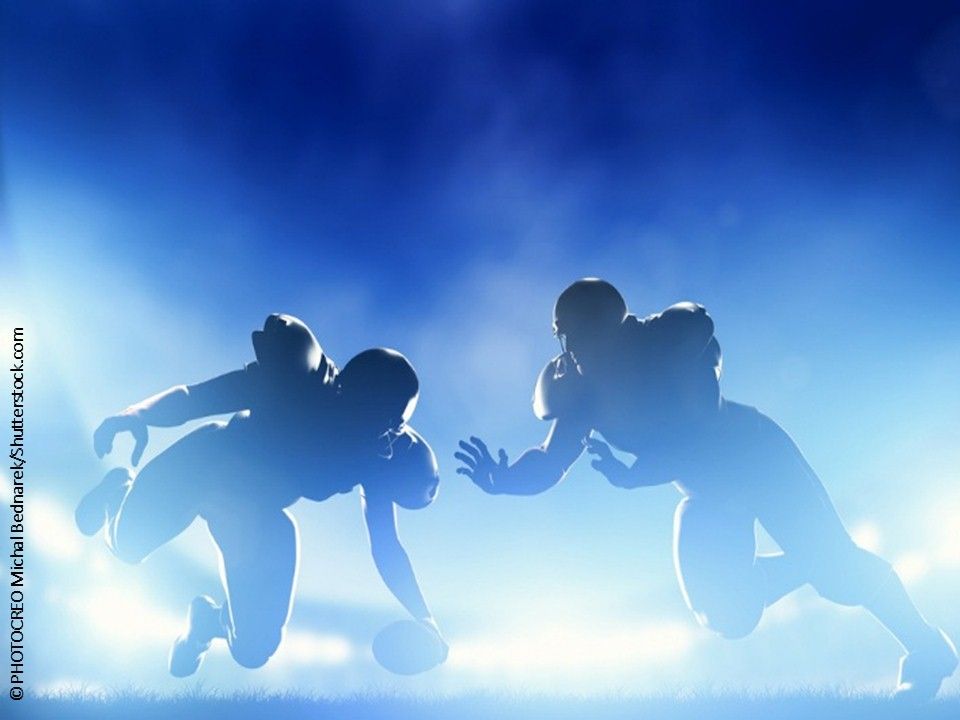Article
ALS and Contact Sports: A Difficult Question
Author(s):
Your patient is a former linebacker with recently diagnosed amyotrophic lateral sclerosis, who asks if football injuries caused his disease. What will you tell him?
Image ©PHOTOCREO Michal Bednarek/Shutterstock.com

CHALLENGING CASE
A 36-year-old man received a diagnosis of amyotrophic lateral sclerosis (ALS) 3 months earlier, and he has returned for his first follow-up visit. He hasn’t noticed much change in his physical symptoms, but he is having trouble coping with his diagnosis. He is currently seeing a therapist weekly to help him cope.
He is trying to understand why this has happened to him and asks about the link between sports and ALS. He has read about Orlando Thomas and Kevin Turner, two National Football League players who developed ALS. The patient was a nonprofessional linebacker during high school and college, and he sustained multiple concussions. He asks if that’s what caused his ALS.
How do you answer?
He currently takes riluzole and tolerates it well. Physical and neurological examination findings are unchanged from the previous visit. No early dysphagia is detected. He denies symptoms of nocturnal hypoventilation. Pulmonary function test results are unchanged from the previous visit.
The Patient Health Questionnaire (PHQ-9) reveals that the patient has felt “down” and hopeless more than half of the days in the past 2 weeks. He denies suicidal ideation.
The patient accepts referral to a psychiatrist for further assessment and possible psychotropic medication for his depressive symptoms. He also accepts referral to an ALS support group: http://www.alsa.org/community/support-groups/
Discussion
A study showed that patients with ALS have a 3.5 times increased likelihood of depression in the first year after diagnosis, compared with people without ALS.1 The risk of suicide may also be highest in the first year after diagnosis. One study found that the risk of suicide may be almost 6 times higher in patients with ALS, compared with the general population. In the first year after diagnosis, the risk was even higher-over 11 times greater than in the general population.2 Some evidence suggests that peer group support programs may provide positive experiences for patients with ALS.3
No one knows exactly what causes ALS, but a complex interaction between genes and environment probably plays a role. About 10% of ALS appears to be familial and likely has a genetic component. Over 40 genes linked to ALS have been discovered.4,5
Some research suggests that environmental factors may trigger ALS in certain individuals with a genetic predisposition. Environmental factors that have been implicated in the etiology of ALS include smoking, heavy metals, pesticides, and certain professional sports, such as soccer6 and American football.7
A recent meta-analysis of 16 studies found that some competitive sports may be linked to an increased risk of ALS.8 Results suggested that susceptibility to ALS was linked to the highest level of play, and that nonprofessional sports may not be linked to ALS.
Professional sports prone to repetitive concussive head and neck trauma, such as American football and soccer, were linked to an 8.5 times higher incidence of ALS compared with controls. One study of American football found that speed positions (fullback, halfback, defensive back, quarterback, wide receiver, running back, linebacker, and tight end) were linked to a higher likelihood of death from ALS than nonspeed positions (defensive and offensive linemen).7
However, results for nonprofessional sports were less clear. Overall, sports with repetitive concussive head and neck trauma were linked to an almost six times increased incidence of ALS, compared with controls. But the difference disappeared in analyses restricted to nonprofessional sports.
Studies have been small, and the connection between ALS and sports still remains to be proven. But evidence suggests a need for increased awareness, prevention, and periodic monitoring among professional and nonprofessional athletes.
References:
1. Roos E, Mariosa D, Ingre C, et al. Depression in amyotrophic lateral sclerosis. Neurology. 2016;86:2271-2277. doi: 10.1212/WNL.0000000000002671.
2. Fang F, Valdimarsdóttir U, Fürst CJ, et al. Suicide among patients with amyotrophic lateral sclerosis. Brain. 2008;131(Pt 10):2729-2733. doi: 10.1093/brain/awn161.
3. Madsen LS, Jeppesen J, Handberg C, et al. “Understanding my ALS”. Experiences and reflections of persons with amyotrophic lateral sclerosis and relatives on participation in peer group rehabilitation. Disabil Rehabil. 2018 Jan 26:1-9. doi: 10.1080/09638288.2018.1429499.
4. Peters OM, Ghasemi M, Brown RH Jr. Emerging mechanisms of molecular pathology in ALS. J Clin Invest. 2015;125:1767-1779.
5. Therrien M, Dion PA, Rouleau GA. ALS: recent developments from genetics studies. Curr Neurol Neurosci Rep. 2016;16:59.
6. Chiò A, Benzi G, Dossena M, et al. Severely increased risk of amyotrophic lateral sclerosis among Italian professional football players. Brain. 2005;128(Pt 3):472-476.
7. Lehman EJ, Hein MJ, Baron SL, Gersic CM. Neurodegenerative causes of death among retired National Football League players. Neurology. 2012;79:1970-1974.
8. Blecher R, Elliott MA, Yilmaz E, et al. Contact sports as a risk factor for amyotrophic lateral sclerosis: a systematic review. Global Spine J. 2019;9:104-118. doi: 10.1177/2192568218813916.




